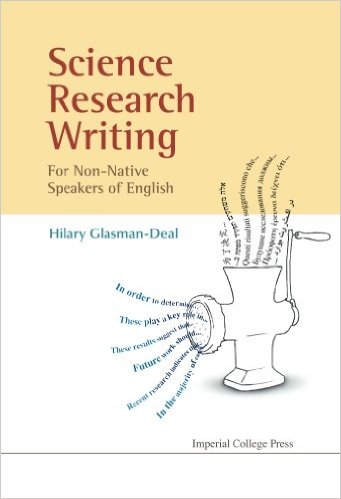Book review: Science Research Writing for Non-Native Speakers of English
October 9, 2015 Filed under Blog, Featured, Publishing, Writing
When I wrote Eloquent Science, the most difficult chapter to write was the one for non-native English speakers. Growing up a native English speaker, I felt that I couldn’t offer much about how to help non-native speakers write better. But, I strongly felt that the book needed to say something to this audience. The books that I was able to find on this topic were not very useful or insightful, dealing mostly with the rote aspects of grammar. I did talk to my colleagues in Finland and China about their experiences and their contributions were essential to the chapter as it evolved. Although I was pleased with the result when the book was published, I knew it lacked the depth that a well-written book on the subject would offer.
That’s when I discovered Hilary Glasman-Deal’s book Science Research Writing: A Guide for Non-Native Speakers of English. Although you learn grammar along the way, the book couches it in the typical structure of a journal article or dissertation.
There are five units:
- How to write an introduction
- Writing about methodology
- Writing about results
- Writing the discussion/conclusion
- Writing the abstract
Each unit has five sections:
- Structure
- Grammar and writing skills
- Writing task: Build a model
- Vocabulary
- Writing a [Results section/Abstract/etc.]
What I like about this approach is that the book then becomes a real practical manual and provides clear guidance that is dependent upon the section of the paper that you are trying to write. This is a superb and clever approach that allows the students to focus on the task of each section, breaking down a big project into smaller bite-sized chunks. The grammar and writing skills for that particular section can be emphasized. The vocabulary particular to each section can be highlighted. The author provides clear explanations of some of the subtleties that are often hard for a native English speaker to provide a non-native English speaker: “How do I choose between a, an, and the?” “I pick what sounds best” is simply not an appropriate response.
But, the book is much richer than just vocabulary and grammar. The author provides insight into the writing and structuring of the different sections. What are the goals of each of these sections, and what is the best way to organize content within each section to make the meaning clear.
To the extent that I have been unable to recommend a single book specifically on non-native English speaking audiences, my problem has been solved. In fact, native English speakers would also benefit from this book.
Kudos to the author for producing a well-written, engaging, and cleverly organized practical guidebook!



